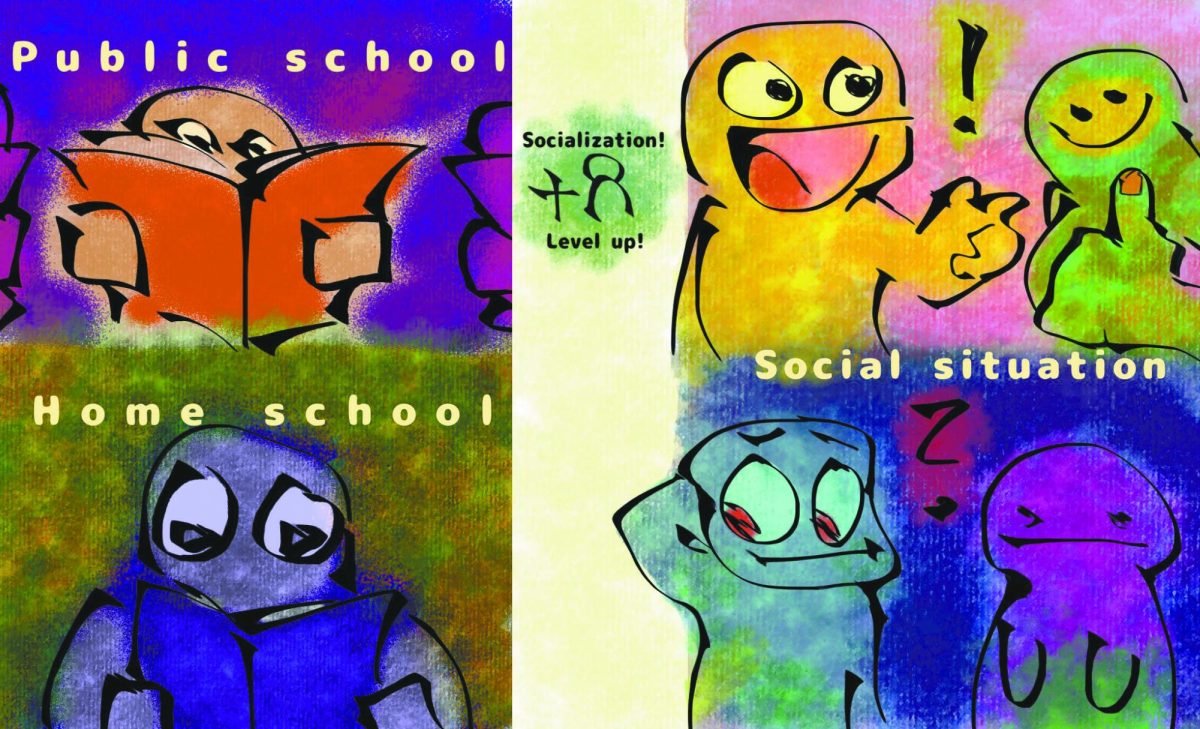When someone thinks about school, the first thing that’ll probably pop up in their head are grades.
Ugh. Grades. Probably the thing that students hate the most.
On April 23, all the way back in 1635 CE, America’s first public school would be opened up in Boston, Massachusetts. It was a boys-only public school that was named the Boston Latin School, and focused heavily on college preparation. Perhaps, however, the more well known type of public education was during the Industrial Revolution, when schools first became available to students of all socioeconomic classes, not just upper.
The Industrial Revolution saw a huge spike of innovation that instigated the growth of the economy. Due to the need for workers and a rapidly industrializing America, children were required to begin working to support their families. As such, basic education like reading and simple numeric skills were required. However, along with instilling basic educational needs within students, Christine Clark of the University of San Diego notes that “public primary schools were created by states to reinforce obedience among the masses and maintain social order.” What better way to teach workers to be obedient than to have them sit in a chair all day doing nothing but practicing that? Hence the establishment of the traditional school system.
Obviously with modern-day labor laws, children cannot work long hours or take on dangerous positions anymore, but the school system still stands. Teachers realized that they needed good ways of keeping score of student’s progress. This is when grades came into existence. Horace Mann– an educator known as the “Father of the Common School Movement” – believed that grades, while they do play a role in motivating students, would force them to only focus on class rank and the results rather than actually learning. Once students reach that goal, motivation diminishes. And this continues– education becomes not about learning, but about the letter grade and being top of the class.
The grading system eventually introduced the idea of “academic validation”. It’s a more recent term coined for the feelings of motivation and happiness that a student gets as a result of being given a good grade. However, academic validation quickly gives way to students placing their own value as a human on whether or not they get an A.
This cycle is the complete opposite of what school was meant for. It was originally meant to teach students basic arithmetics and English to help them, but now it’s completely about being at the top. Learning is no longer for learning and bettering students, it’s about getting “good” grades because that is the way to be the best.
As a result, school just isn’t fun for students, when it should be. And it sucks, because students spend a majority of their day at school. The fact is school gets draining. And it wouldn’t be draining if students had fun learning. And it would actually be fun if students didn’t feel the need to worry about “making mistakes” or getting at least an eighty or ninety percent at the end.
Grades, while made with good intentions, have quickly become something that stands in the way of a student’s personal growth, and breaks them down. However, that’s not to say that grades as a whole should be discarded. It should certainly be acknowledged that grades are a good way of measuring a student’s individual progress. The issue comes from the fact that school is now only about them. It’s not about truly learning anymore– almost any student would probably say something along the lines of “I’m only taking the class for an A” or “I just forgot everything after the test”.
Instead of telling students to get A’s or B’s, encourage them to try and get a better grade than they did last time, regardless of what letter that may be. That way, school isn’t about being at the top, it’s about truly learning and growing. Schools across America, especially East, have already done a good job with abolishing the title of valedictorian at graduation. However, we can still continue to improve. Heavy emphasis is given on standardized testing. Of course, encouraging students to do well on these types of tests is great, but the pressure of it all builds up. Students should be made aware that, despite what they might believe, it’s not the end of the world if they don’t perform as well as they wanted to. The pressure of feeling obligated to earn top scores doesn’t bring students motivation, it dooms them to a life of dissatisfaction that stretches far after they complete high school.
We need to remember that the students today are the future adults of tomorrow, that what they experience and learn now is what will shape them into leaders. They need to learn to feel comfortable with making mistakes, and that’s not possible when they fear a low grade on a test.
It’s time to make school enjoyable again.


